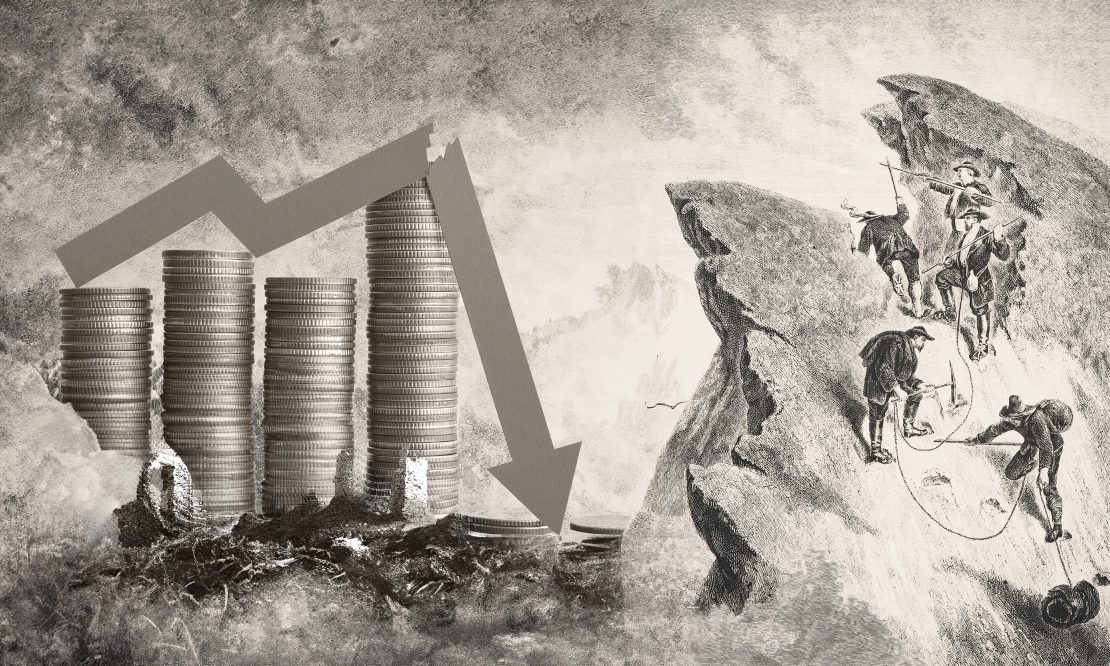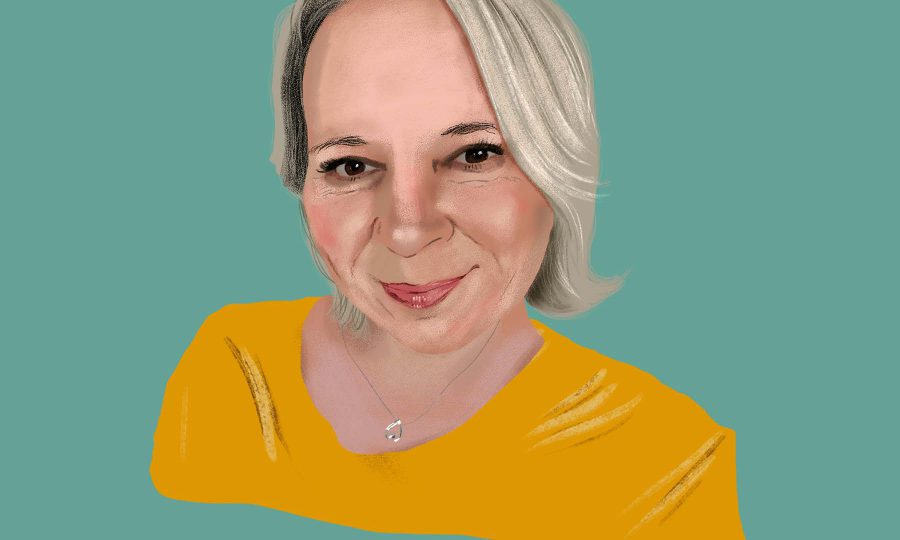“The rich world is headed for policy oblivion.”
We’re standing on the brink of a crumbling economic precipice, says Professor Barry Standish. We ask him: is it too late to turn back?

What is it about the recent banking crisis that is so important?
Every economic crisis since the late 20th century has resulted in stimulatory economic policy. The challenge is that each round of stimulation has reduced the ability to manoeuvre. Continuing on the current course will lead the rich world into a macroeconomic policy cul-de-sac. The recent banking crisis – which we are told is controlled – exposes this policy dilemma for what it really is. The rich world is headed for economic policy oblivion.
There are two parts to the current policy dilemma. First are the underlying inflationary pressures. To deal with that, you need higher interest rates or what’s called quantitative tightening – decreasing money supply. But we also have a banking crisis that requires quantitative easing or lower interest rates – or both. To top this off, we have the ‘zombie banks’ – banks that are bankrupt. They’re the living dead. They historically cause economic paralysis because the bad assets they hold block up the financial system. And zombie banks need quantitative easing.
How did we get to this policy dilemma?
The financial crises of the past few decades demanded stimulation. In the rich world, the last time contractionary macroeconomic policy was needed was in the early 1980s. The dot-com bubble, the financial crisis and Covid all called for stimulatory policy. It was only the inflationary consequences of Ukraine that called for contraction. It appears that central banks were caught unaware of the impact of higher interest rates on the banking sector.
So, the roots of the most recent crisis lie in the 2007 financial crisis, and the stimulation that demanded?
The 2007 financial crisis is predated by the dot-com bubble of 2000. When that bubble burst, the US pumped in huge fiscal stimulation long after that bubble was over. Interest rates were so low – with the real rate reaching minus three and a half – that banks were effectively paying people to borrow. There was excessive fiscal and monetary stimulation from 2001 to 2006, long after the crisis had ended in 2002. This monetary stimulation had to go somewhere, and it went into US housing and equity. This led to the spectacular US housing bubble of 2007, a stock market meltdown and a world financial crisis.
This is where it becomes interesting. The traditional macroeconomic weapons were already depleted. Interest rates were too low before the crisis. Rich country government debt was too high for people to want to hold more bonds. The high debt created expectations of tax increases. Any stimulus would be saved – this is fiscal impotence. In a nutshell, the financial crisis led to macroeconomic policy paralysis. Nominal interest rates were dropped to zero. Fiscal stimulation broke all the financial discipline rule. Yet none of this worked. So central banks brought out the new magic potion – quantitative easing! And today, macroeconomic stimulation relies only on quantitative easing – increasing money supply.
This all starts with the dot-com bubble, then. Why did the US respond with such excessive stimulatory policy to that bubble?
Look to Japan. Starting in the early 1990s, Japan entered a long period of recession and deflation. This is the so-called ‘lost decade’. It started with a major property and equity bubble collapse – not unlike the dot-com bubble. It has now ended up with the highest government debt in the world and negative interest rates. Japan has no policy options left in a world that needs economic stimulation. If tax cuts are introduced, people are likely to save them, not spend them. Interest rates are already negative. This is fiscal and monetary policy impotence. The US was desperate to avoid what happened to Japan – which did too little, too late – so did too much, too soon. Japan ended up with policy paralysis and the US with a spectacular financial bubble.
And this brings us back to the banking crisis. Can you outline the events and policy structure that brought this about? Why has inflation been the catalyst for the crisis?
Banks are required to hold government securities (bonds) as part of their assets. In the US, there are different rules governing how these assets are valued. The largest banks are required to ‘mark to market’, meaning they must value bonds for the price that they can be sold. Small and medium banks can value bonds at their ‘par’ value irrespective of their market value.
There is an inverse relationship between government bonds and interest rates. As inflation increased and central banks increased interest rates, so the value of bonds fell. The value of assets being held by small and medium-sized banks fell, to the extent they became technically bankrupt. Depositors, becoming aware of this, ran on their banks and withdrew their deposits. Now banks were both illiquid and insolvent.
Four US banks went bankrupt – SV (Silicon Valley) Bank, Signature Bank, First Republic Bank and Heartland Tri-State Bank. Credit Suisse also went down, although that had been in decline for years. Multiple other banks remain at risk.
Is this the policy dilemma?
It is today’s policy dilemma. What do you do? You cannot let banks go bankrupt. This is the lesson we learnt from Japan and the financial crisis. So you either must cut interest rates or recapitalise banks through quantitative easing. Yet you must reduce inflation – entrenched inflation is too dangerous and damaging. This requires higher interest rates or quantitative tightening.
On the face of it, inflation is falling. This is both because energy and food prices have been falling, as has core inflation in the US. Core inflation has slowed in the Eurozone and, at the moment, continues to increase in the UK. The inflationary outlook depends on what happens to energy and food prices – both of which appear to have been increasing in the past few months.
What is the long-term outlook?
That is a question that peers into the ‘fog of the future’. Let’s imagine that inflation comes back to bite the rich world – an easily imaginable outlook. Central banks must increase interest rates yet provide liquidity to the banks. This is a major policy contradiction.
Now let’s imagine inflation is tamed. Central banks must bring their wayward macro policy instruments under control. This means quantitative tightening, and we need another conversation about the consequences of that. It also means a radical reduction of government debt – which lies outside the ambit of central banks.
It might be said we can look forward to an interesting future – if such things interest you.
Professor Barry Standish was the director and partner of the consulting company StratEcon. Before joining StratEcon, he lectured at the Graduate School of Business at the University of Cape Town and was responsible for Economics on the Full Time, Modular and Executive MBA programmes. He was the host of RSM’s hugely popular ‘Lunch with Barry’ webinar series. Watch the final episode.
Sadly, Barry passed away in March 2024 at the age of 69. As a visiting professor on our MBA programmes for more than a decade, Barry was loved by students for his wit and insight; breaking down complex economic concepts with a sense of humour and unfiltered analysis. If you asked him for his opinion, Barry wouldn’t sugar coat his answer – and his students wouldn’t have had it any other way.
Our thoughts are with Barry’s family at this difficult time. If you would like to leave a message for them, you can do so via the online condolence book they have created.



